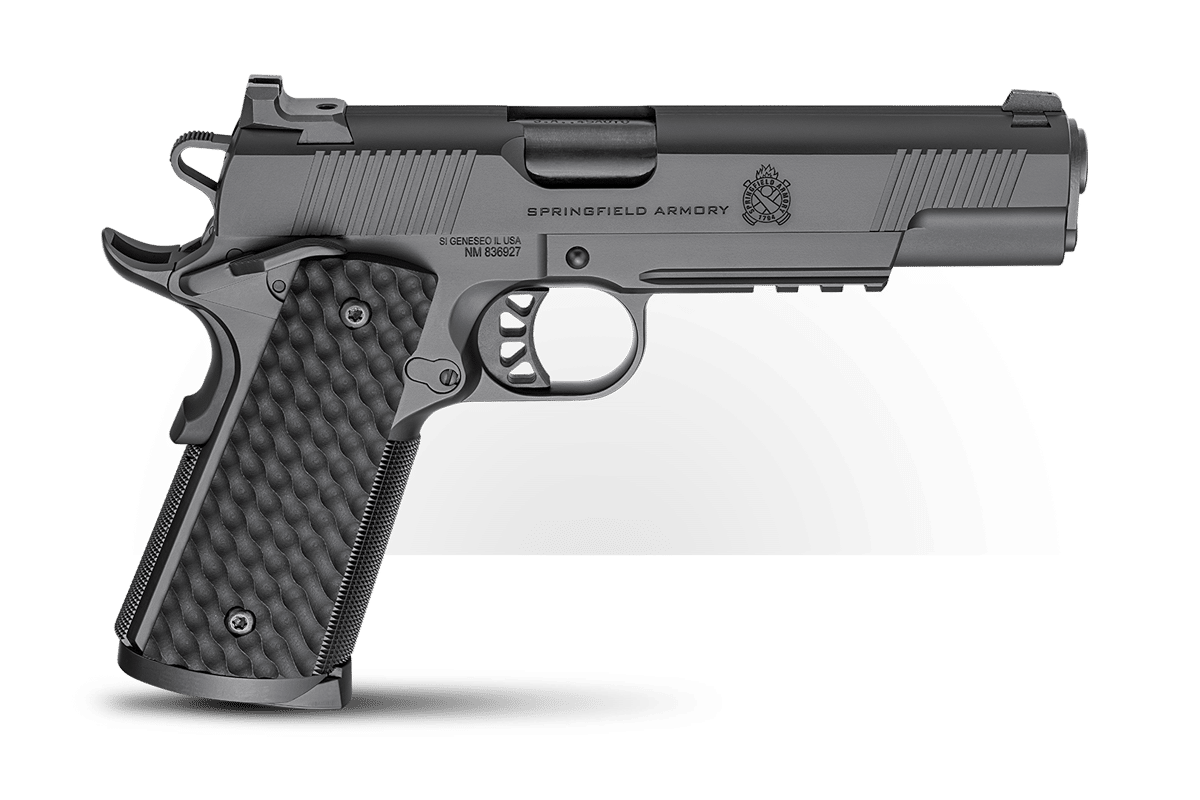1911 Carry Conditions Explained
February 1st, 2024
7 minute read
What are the 1911 carry conditions? In today’s article, firearms expert Massad Ayoob explains the five conditions of 1911 carry, from one to zero.
The late, great gun expert Jeff Cooper popularized a four-part series of terms to describe the level of readiness of his signature handgun, the 1911 .45 auto. He later supplemented it with a fifth. Cooper’s terminology has become virtually standard, and it applies to every other type of semi-automatic pistol.
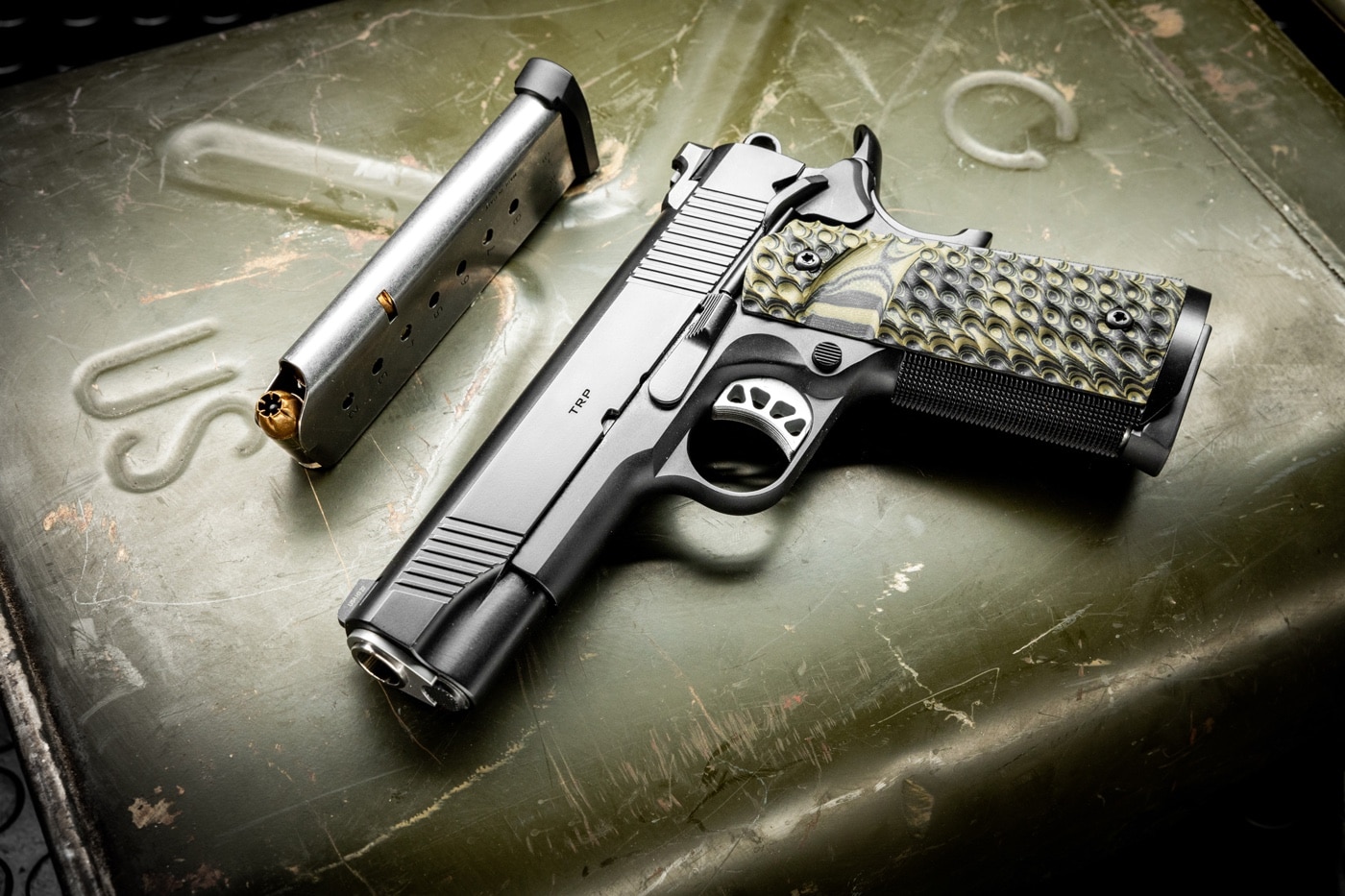
The 1911 carry conditions identified by Cooper went like this:
Condition One was fully loaded, magazine in place and a live round in the chamber, with the hammer back and the thumb safety engaged in the “on safe” position. This became known as “cocked and locked.”
Condition Two described a loaded magazine in the pistol, live round in the chamber, but the hammer lowered.
Condition Three saw the loaded magazine in place but the hammer down on an empty chamber.
Condition Four meant a pistol completely unloaded, with a full magazine hopefully somewhat readily at hand.
Later, when he learned of a military unit in another country that carried its P-35 pistols fully loaded with a round in the chamber, cocked and off-safe, Col. Cooper coined the term Condition Zero for that practice.
Let’s examine each method, in the order presented above.
What Is Condition One?
Long before the U.S. Marine Corps introduced a then-young Jeff Cooper to the 1911 pistol, such fighting men as the Texas Rangers had informally adopted the 1911 as semi-auto of choice and carried it full up, round in the chamber, cocked and locked. Col. Cooper recognized this as the most logical way to carry this type of handgun and may have done more than anyone else to popularize Condition One.
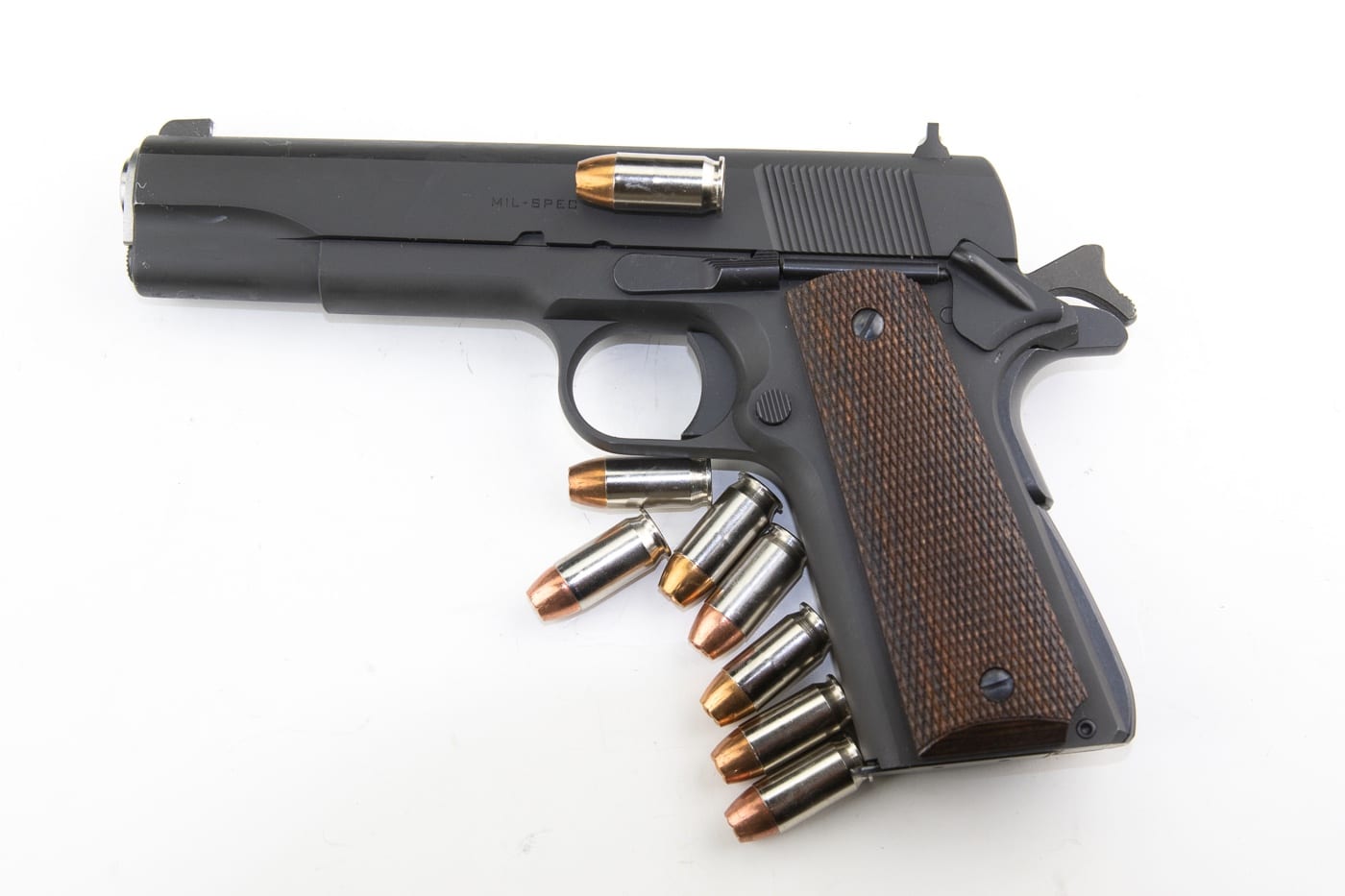
On the draw, the thumb of the firing hand is placed just above the thumb safety lever. When firing is imminent, or toward the end of the draw stroke in a draw-to-the-shot, the thumb presses the lever down into the “fire” position.
Cocked and locked carry has long been standard among American police and armed citizens for carrying this type of pistol. One advantage is maximum speed: skilled shooters with on-safe 1911s have been known to win draw-and-shoot contests against equally skilled shooters with “point and shoot” guns, since the safety is wiped into the “fire” position on the draw, and thus, no time is lost.
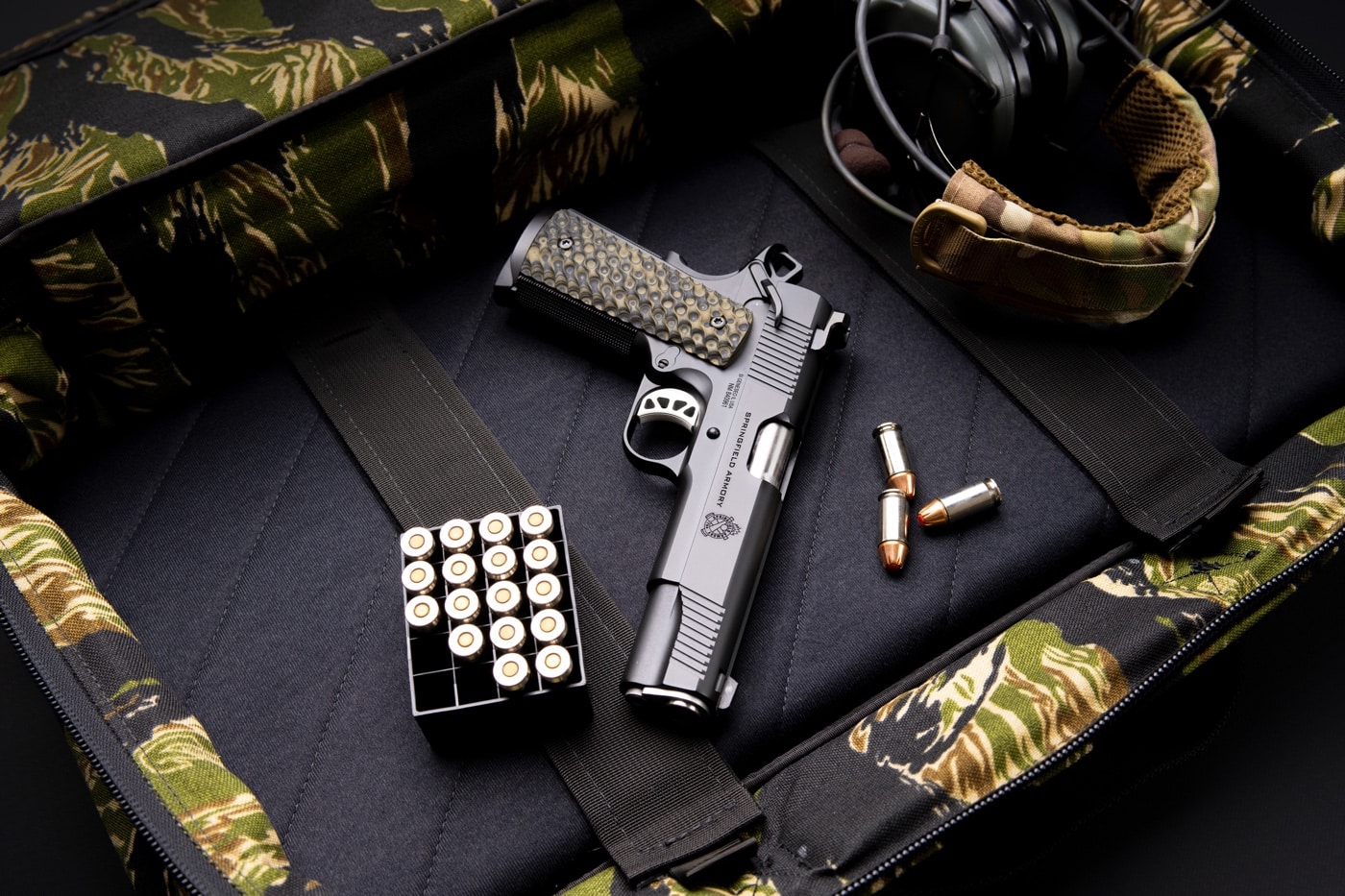
Another huge advantage of cocked and locked carry is its proprietary nature to the user. There are countless cases of Bad Guy getting a gun away from Good Guy, trying to murder Good Guy with his own gun, and failing because Bad Guy couldn’t find the inconspicuous little lever that “turns on the machine.”
Condition One is what virtually every living gun expert recommends for those who carry 1911 pistols for immediate, reactive purposes such as self-defense.
What Is Condition Two?
Said to once be standard among police in Mexico, hammer down on a live round with the 1911 makes on-safe carry impossible…and the gun must now be manually cocked before it can be fired.
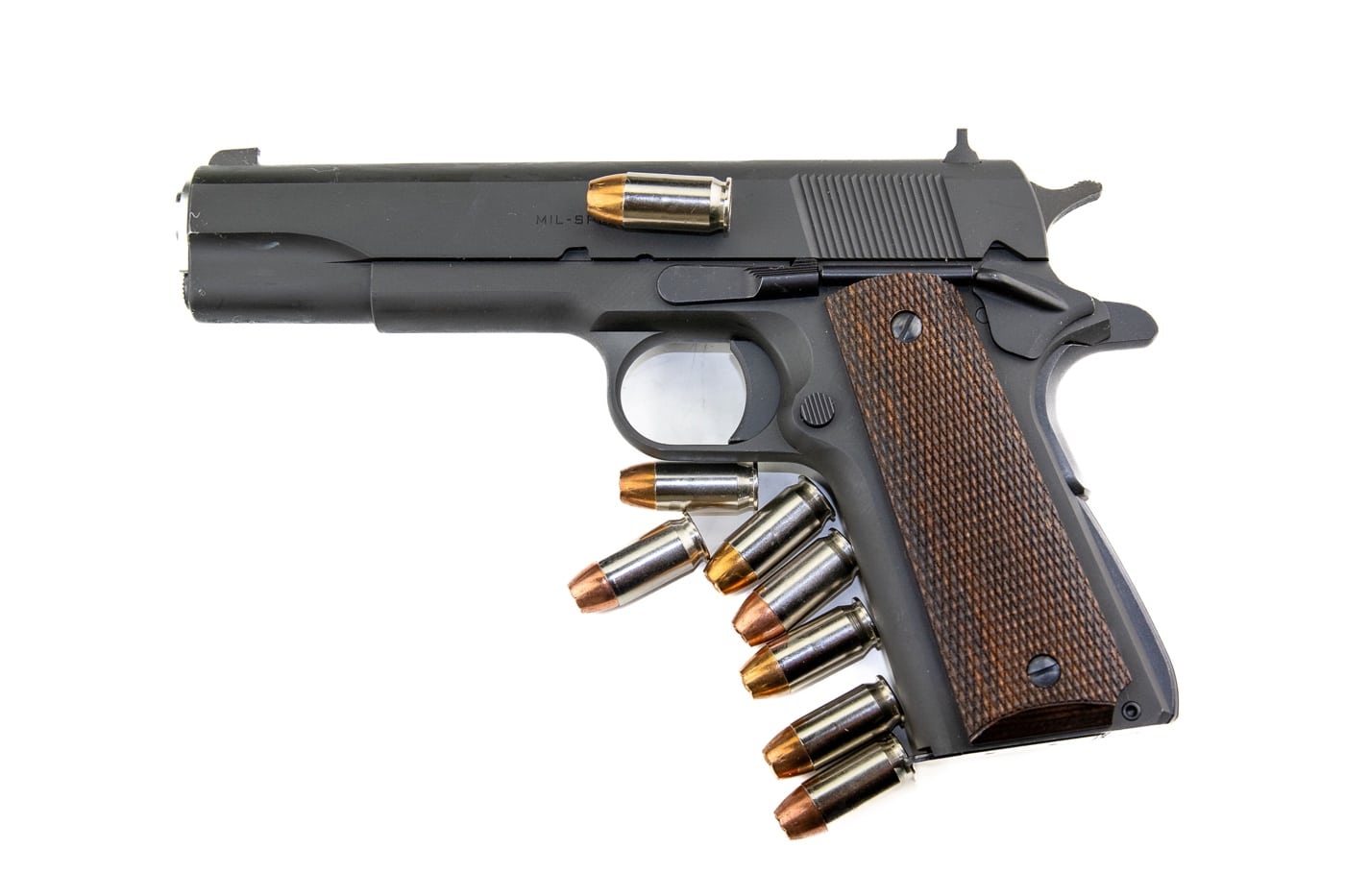
More to the point, since the hammer is located so far back over the web of the hand compared to hammer placement on, say, a revolver, Condition Two is extremely awkward to perform, especially if the shooter only has one hand free to draw and get the pistol operational. The fingers lose strength to hold the gun in this position, so it can be easily knocked from the hand, particularly in a fast-moving high-stress situation.
Moreover, lowering the hammer on a live round to begin with requires pulling the trigger of a loaded pistol, which many of us today consider a safety violation in any situation where we DON’T want the pistol to discharge.
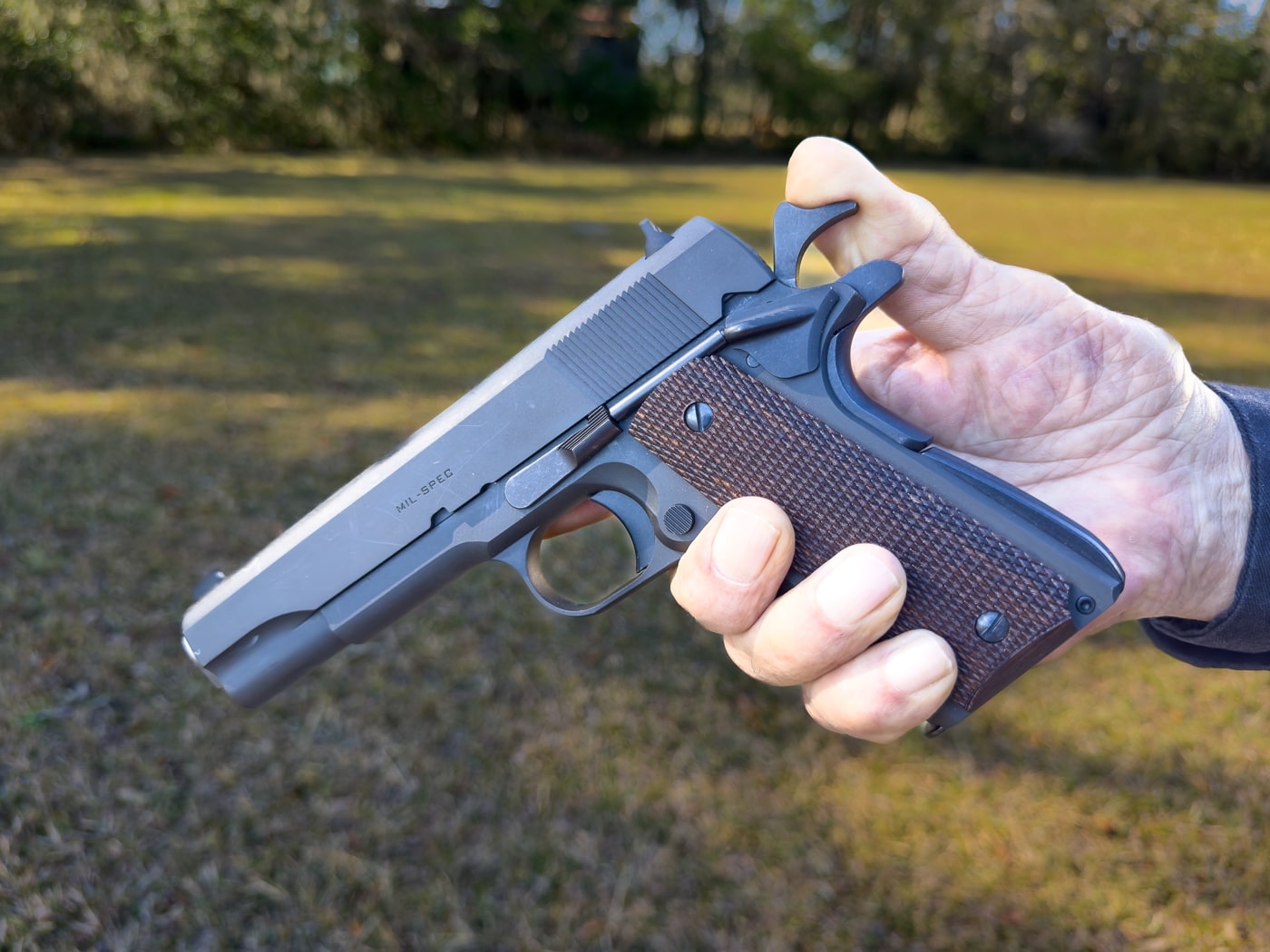
Think about it. If you’ve been carrying hammer down, the hammer became cocked because you thought you’d have to shoot. A self-defense shooting is likely to trigger fight or flight response, in which adrenaline courses through the body.
If you’ve ever seen an alarmed person physically shaking or have seen the tremors induced when someone subject to anaphylactic shock is stung by a bee and has to take a hit from the epi pen, you can imagine such a trembling hand trying to perform the awkward procedure of lowering the hammer on a live round once the danger has passed. That’s true if even at that point both hands are free to perform the procedure.
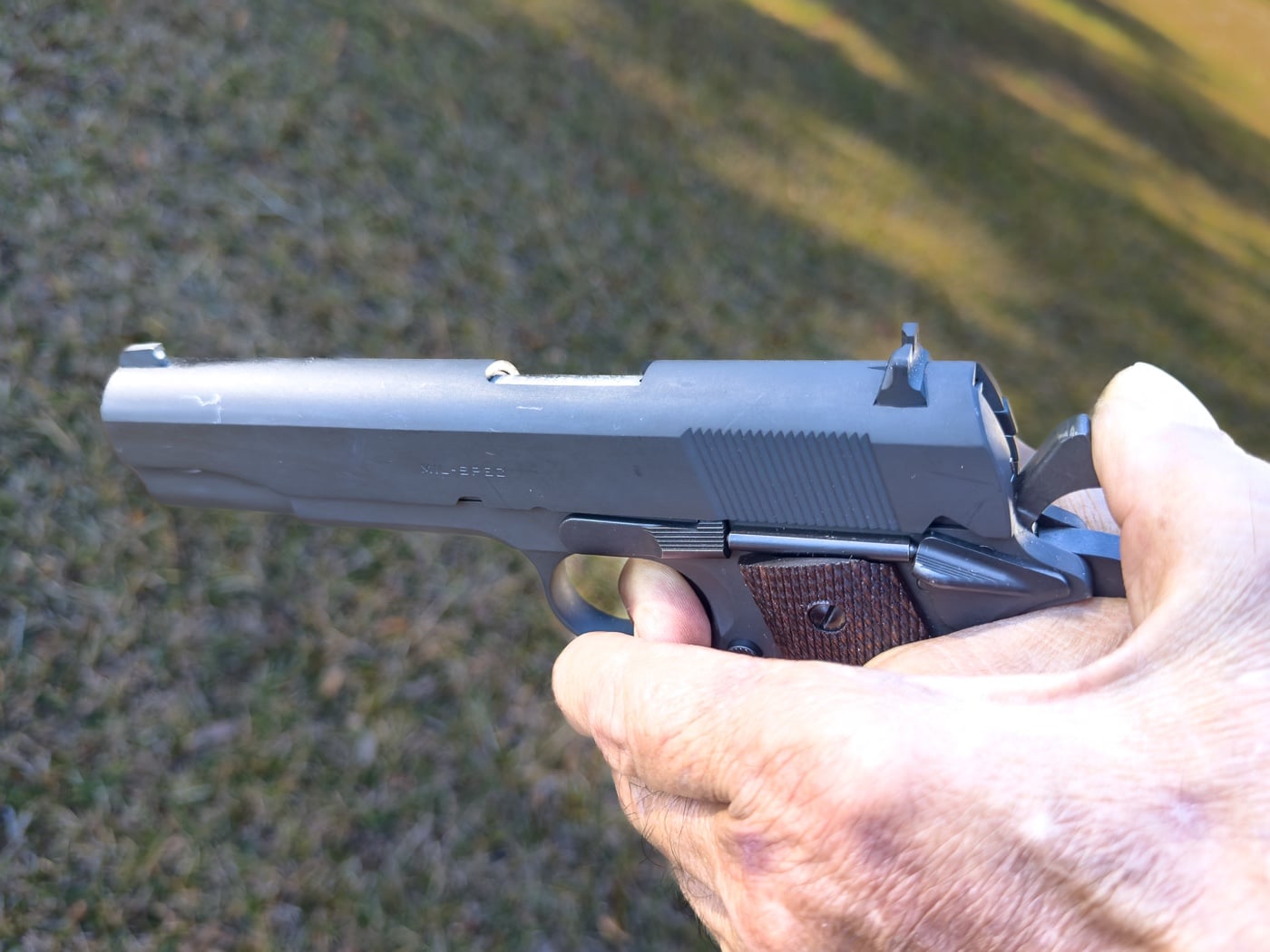
I cannot think of a single credentialed gun expert still living who recommends Condition Two with a 1911 or other single-action semiautomatic pistol.
Condition Two is best reserved for its natural habitat, the double-action semi-auto, and even then, is safest when the decocking lever is employed to lower the hammer, rather than doing so by hand. (Lowering the hammer by hand on some DA autos bypasses the internal safety shelf and renders the pistol no longer drop-safe.)
What Is Condition Three Carry?
Full magazine and empty chamber goes back to the days of the original military 1911 and 1911A1, before manufacturers figured out that installing a lightweight firing pin as Springfield Armory does in all its 1911s or adding an internal firing pin safety as some other makers have.
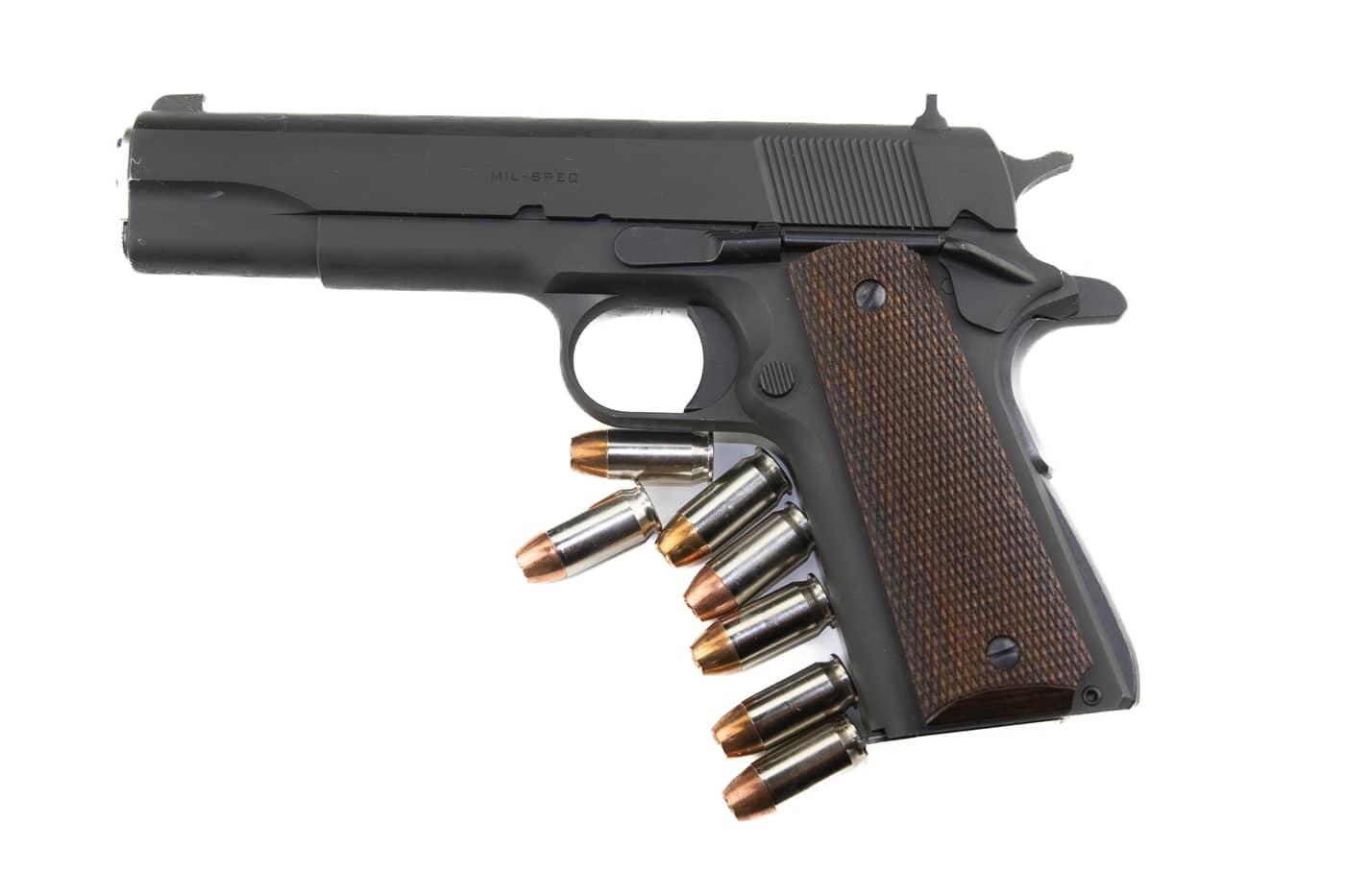
You see, those old original 1911s could go off if dropped, from an “inertia discharge” when the firing pin moved in its channel. The military reportedly determined that the force of a Paratrooper hitting the ground could be enough to cause such a discharge.
With this in mind, the pioneers of Israeli firearms training, knowing their personnel had a mish-mash of probably not drop-safe guns, adopted Condition Three. Indeed, “Israeli carry” is a synonym for Condition Three.
But it is not at all optimal for a reactive life-saving emergency rescue tool that might be needed at a moment’s notice. There is not a single domestic law enforcement agency I know of in the U.S. that carries Condition Three. This should tell us something.
If you are unfortunate enough to be carrying a pistol that can suffer inertia discharge, Condition Three is the only safe way to carry it. In a world full of probabilities, the likelihood of dropping the gun at some time in your life probably exceeds the likelihood of needing to fire it in self-defense. The best advice is to trade into a pistol that is drop-safe.
What Is Condition Four?
Condition Four is when the gun is completely unloaded, with a full magazine hopefully in readiness nearby.
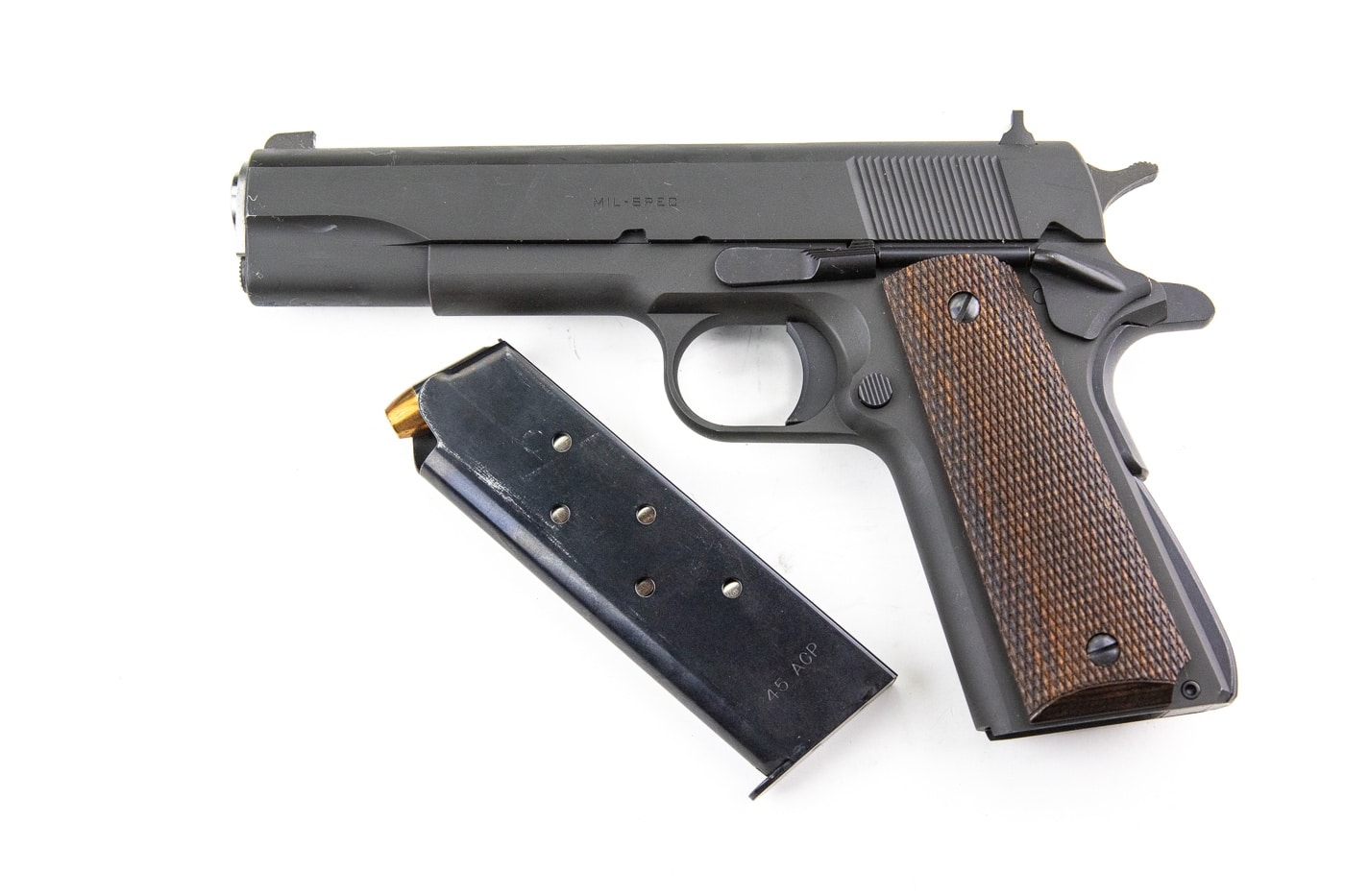
When I was a boy, the state I grew up in only required a permit for carrying loaded and concealed in public. Failure to abide was a misdemeanor (up to one year in jail) for first offense, and a felony for subsequent offenses. I was legal to carry Condition One inside my dad’s jewelry store, since doing so was a condition of employment, but before I stepped out into the street to go to the bank to make a deposit or went out at night for a walk, I was only legal to carry empty with a full magazine in my pocket.
Adulthood took me to another location or two where the rule was the same. I reluctantly complied, in the full knowledge that it would put me far behind the curve in a reactive self-defense situation.
In my opinion, Condition Four is NOT RECOMMENDED UNLESS NECESSITATED BY LOCAL LAW. In this case Condition Four is a whole lot better than “Condition Helpless” with your gun left at home.
Condition Zero
With a chamber-loaded, cocked and off-safe pistol carried on your person, you are extremely vulnerable to an unintentional discharge if anything from a fold of clothing to a finger presses that trigger to the rear as you slide it into the holster with the web of your hand already depressing the grip safety.
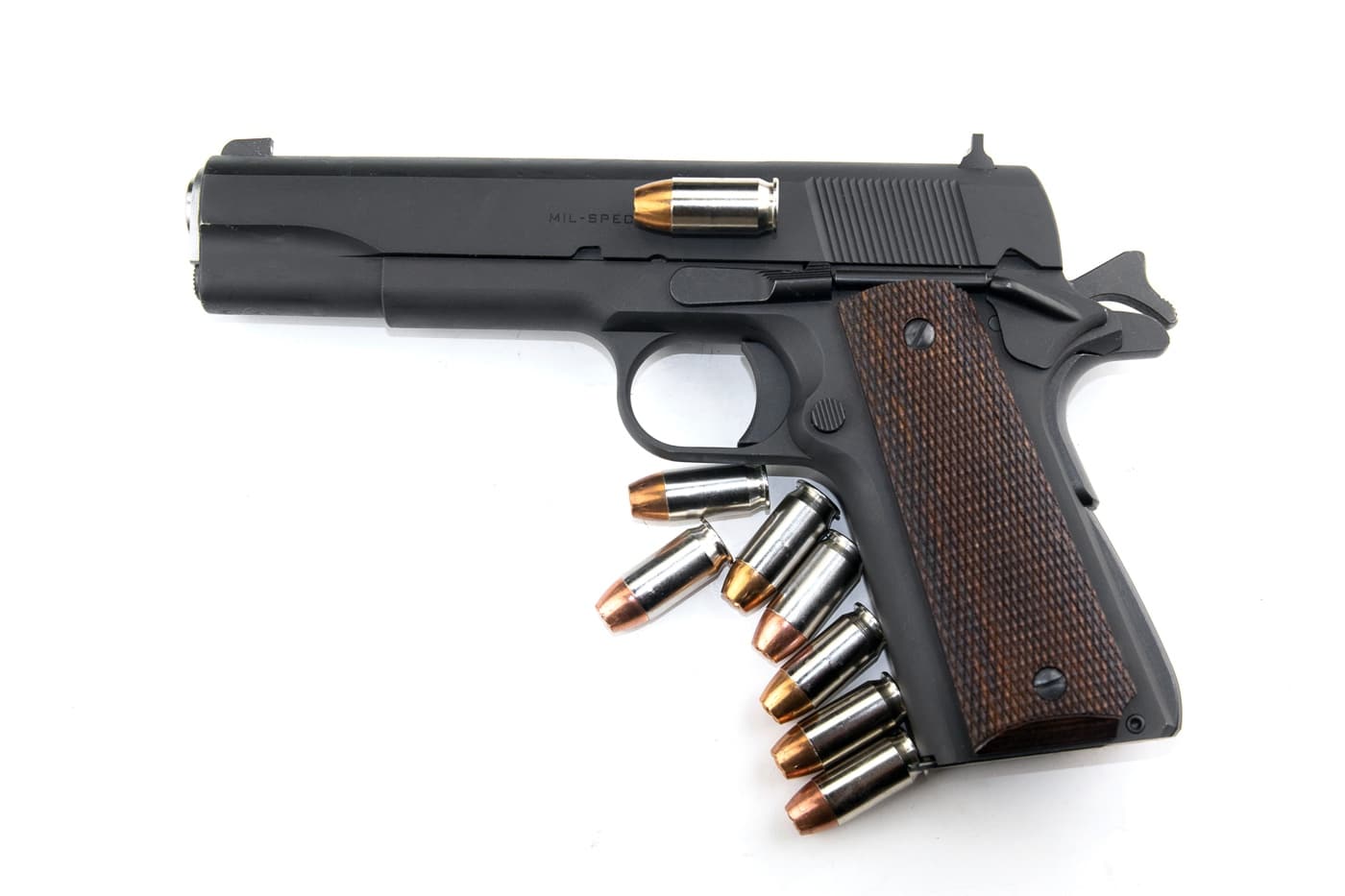
NO genuine expert will tell you that carrying a loaded 1911 that way is safe. Period.
Recap: Conditions of Carry for the 1911 Pistol
Santayana famously said that those who do not learn from history are doomed to repeat it.
The 1911 remains an excellent defensive handgun. Professionals carry them Condition One, and carry 1911s which are drop-safe, with modern internals like those produced by Springfield Armory.
Those uncomfortable carrying a pistol with its hammer back have many other handgun designs to choose from.
And yes, it is that simple.
Editor’s Note: Be sure to check out The Armory Life Forum, where you can comment about our daily articles, as well as just talk guns and gear. Click the “Go To Forum Thread” link below to jump in!
Join the Discussion
Featured in this article
Continue Reading
Did you enjoy this article?

 816
816




